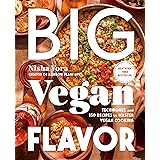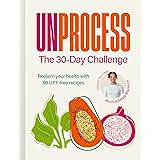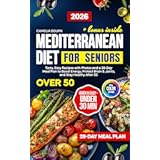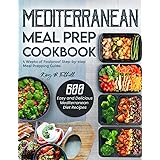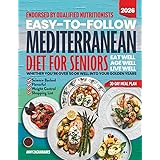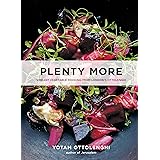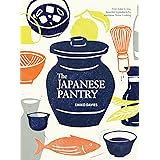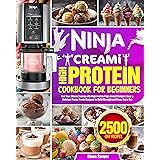Are you striving for effective fat loss but finding your grocery bill climbing higher than your motivation? As highlighted in the accompanying video, achieving a caloric deficit doesn’t necessitate breaking the bank or sacrificing delicious, easy-to-prepare meals. This comprehensive guide delves deeper into the strategies behind a truly budget-friendly fat loss meal plan, ensuring you can nourish your body, hit your protein targets, and shed unwanted weight without financial strain.
The journey to a leaner physique starts in the grocery store. This detailed plan, demonstrated to cost just over five dollars a day for four satisfying meals, integrates core principles of nutrition and smart shopping. We will explore how to source the most cost-effective ingredients, prepare meals efficiently, and even customize your intake for optimal results, ensuring your fat loss efforts are both sustainable and successful.
Mastering Budget-Friendly Nutrition for Fat Loss
The foundation of any successful fat loss meal plan, especially one optimized for budget, lies in strategic ingredient sourcing. As the video demonstrates through a compelling comparison, where you shop significantly impacts your bottom line. Stores like Aldi consistently offer healthier options at a fraction of the cost compared to premium retailers, proving that wholesome eating doesn’t require a premium price tag.
Beyond the store choice, understanding the concept of cost-per-serving for essential macronutrients is crucial. This involves identifying the proteins, carbohydrates, and fats that deliver the most nutritional value for the least expenditure. Imagine cutting your weekly grocery bill in half simply by making informed choices about where and what you purchase, directly accelerating your journey towards sustainable fat loss.
The Strategic Power of Protein in Your Fat Loss Journey
When discussing a cost-effective fat loss meal plan, protein often emerges as a perceived financial hurdle. However, this perception can be misleading. While individual servings of certain protein sources like salmon or premium ground beef can be expensive, a meticulous analysis reveals that alternatives, even protein powder, can be remarkably economical on a cost-per-gram basis.
Protein powder, when purchased in bulk, frequently proves cheaper per gram of protein than many conventional sources such as eggs, milk, or canned tuna. Moreover, its convenience and ability to deliver a concentrated protein dose without excessive fats and calories make it an invaluable tool for a calorie-controlled diet. Incorporating diverse, high-value protein sources is paramount not only for muscle preservation during a deficit but also for enhancing satiety, thereby reducing overall caloric intake and facilitating effective fat loss.
Crafting Your Daily Budget Fat Loss Meal Plan: Recipes & Tactics
Consistency and variety are cornerstones of a sustainable fat loss meal plan. The meals detailed here are not only economical and simple to prepare but also offer flexibility to prevent dietary fatigue. Each recipe is designed to be high in protein and perfectly integrated into a comprehensive fat loss strategy.
Breakfast: The Fueling Power of Overnight Oats
Overnight oats represent an ideal breakfast for a fat loss meal plan due to their balance of slow-digesting carbohydrates, protein, and healthy fats. This meal requires minimal preparation time, often taking less than five minutes the night before, making it perfect for busy mornings. Combining oats, 0% plain fat-free Greek yogurt, and protein powder provides a robust nutritional profile.
Consider a quick morning routine where your breakfast is already prepared, offering sustained energy without a post-meal crash. Customization is key to keeping this meal interesting; experiment with different protein powder flavors, fresh or frozen fruits like berries or diced apples, and spices such as cinnamon or nutmeg. A tablespoon of peanut butter adds healthy fats and flavor, while a pinch of salt enhances the overall taste profile.
Lunch: Revolutionizing Meal Prep with Freezer Burritos
One of the primary challenges of meal prep is the limited shelf life of many prepared dishes. Freezer burritos, however, offer an exceptional solution, staying fresh for months and proving incredibly convenient for a busy fat loss meal plan. These burritos combine diced chicken, pinto beans, onions, peppers, and cheese within a cost-effective white flour tortilla, prioritizing practicality and taste.
To maximize flavor without adding excess calories, season generously with staples like salt, garlic powder, pepper, and a dash of soy sauce during cooking. The cooling step before wrapping is crucial to prevent tortilla breakage, ensuring your perfectly portioned burritos remain intact. Once assembled and frozen, these can be quickly reheated, offering a warm, satisfying, and high-protein lunch on demand, eliminating the temptation for less healthy, more expensive alternatives.
Strategic Snacking: Bridging the Gap Between Meals
Mid-day hunger pangs can often derail even the most meticulously planned fat loss meal plan. Incorporating a simple, healthy snack is a highly effective strategy to manage appetite and prevent overeating at subsequent meals. An apple, for example, is a remarkably cost-effective option, providing satiety and nutrients for minimal calories and cost.
While an apple is a straightforward choice, other budget-friendly options might include a small serving of Greek yogurt or a handful of almonds. The goal is to choose a snack that provides a sense of fullness and prevents impulsive, calorie-dense choices. Investing a small amount in a strategic snack can significantly improve adherence to your overall dietary strategy.
Dinner: Reimagining Fried Rice for Fat Loss
Fried rice, a nostalgic favorite for many, can be expertly adapted into a healthy, budget-conscious fat loss meal plan. This version utilizes scrambled eggs, carrots, green peas, and day-old white rice, seasoned with soy sauce. The inclusion of green peas is a noteworthy strategy; they contain almost half the calories relative to their volume compared to rice, allowing for increased portion sizes and greater satiety for fewer calories.
Using day-old rice is not merely a convenience; it is a culinary technique that ensures firmer grains and prevents clumping, resulting in superior texture. For those seeking to further enhance their nutritional intake, adding a side of steamed broccoli or other budget-friendly vegetables can significantly boost fiber and micronutrient content. This dinner provides a delicious, satisfying, and macronutrient-balanced option that supports your fat loss objectives.
Satisfying Sweet Cravings: The Protein-Packed Dessert Smoothie
Successfully adhering to a fat loss meal plan often means managing late-night cravings. A strategically planned, healthy dessert can be a powerful tool to satisfy a sweet tooth without compromising your caloric goals. The protein-packed dessert smoothie is an excellent example: a simple blend of frozen banana, protein powder (chocolate works wonderfully), peanut butter, water, and ice cubes.
This concoction delivers both sweetness and a significant protein boost, promoting satiety and discouraging less healthy snacking. Should protein powder be unavailable, Greek yogurt offers a suitable swap, though a sugar-free sweetener might be needed for taste. For those looking for a premium experience, tools like the Ninja Creami can transform this exact recipe into a homemade, ice cream-like dessert, making adherence to a fat loss meal plan feel less like a sacrifice and more like a treat.
Personalizing Your Fat Loss Meal Plan: Calorie & Macro Adjustments
While the baseline plan of approximately 2,000 calories and over 150 grams of protein is effective for many, true optimization for a fat loss meal plan requires personalization. Individual caloric and macronutrient needs vary significantly based on factors such as body weight, gender, age, activity level, and metabolic rate. A slight calorie deficit, typically 300-500 calories below maintenance, is necessary for fat loss, but protein intake should remain high to preserve lean muscle mass.
Picture tailoring your plan precisely, much like the adjustments made for Jeff in the video, where his active lifestyle necessitated a slight increase in carbs and fats to ensure a healthy rate of weight loss. Utilizing a Total Daily Energy Expenditure (TDEE) calculator can provide a more accurate starting point for your caloric needs. From there, adjustments can be made by slightly increasing or decreasing carbohydrate and fat portions in your meals. For instance, adding an extra serving of rice to dinner or a bit more peanut butter to breakfast can subtly increase calories without compromising the budget-friendly nature of the plan. This scientific approach ensures your fat loss meal plan is effective and sustainable for your unique physiological requirements.
Sustaining Adherence: Variety Through Smart Food Swaps
One of the biggest obstacles to long-term success with any fat loss meal plan is meal fatigue—the boredom of eating the same foods repeatedly. Proactive planning for variety through smart food swaps is essential for sustained adherence. The core recipes provided are robust enough to allow for numerous cost-effective substitutions without altering the overall nutritional integrity or budget.
For breakfast oats, instead of banana, consider budget-friendly frozen berries or diced apples. For the freezer burritos, while chicken is economical, ground turkey or even lentils could provide a protein alternative with different flavor profiles. In the fried rice, swap carrots for bell peppers when they are on sale, or add frozen mixed vegetables for an easy nutrient boost. Even the dessert smoothie can transform with different frozen fruits or a hint of cocoa powder. Such strategic swaps keep your fat loss meal plan engaging and prevent the monotony that often leads to abandoning dietary goals.
The Proof is in the Progress: Real-World Fat Loss Results
The efficacy of this budget-friendly fat loss meal plan is not merely theoretical; it is demonstrated through tangible results. As evidenced by Jeff’s progress in the video, a consistent adherence to this structured eating approach led to a measurable loss of 1.8 lbs in just seven days. This outcome underscores a critical principle in weight management: consistency, even when imperfect, yields results.
Jeff’s journey, which included a few meals out for family birthdays, highlights that an effective fat loss meal plan doesn’t demand absolute perfection. It’s about establishing a consistent calorie deficit and prioritizing nutrient-dense, high-protein foods. By focusing on smart grocery choices, efficient meal preparation, and strategic customization, individuals can achieve significant fat loss and improve their overall health, proving that a disciplined yet flexible fat loss meal plan is undeniably effective.


